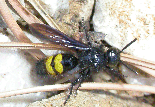FLEGR J., HRDY I.. (1994). Influence chronic toxoplasmosis on some personality factors. Folia Parasitol. 41: 122-126.
FLEGR J., ZITKOVÁ ., KODYM P., FRYNTA D. (1996). Induction of changes in human behaviour by the parasitic protozoan Toxoplasma gondii. Parasitology, Vol. 113, p. 49 - 54.
FLEGR J. ZITKOVÁ Š., TACHEZY J. (1998). The role of psychological factors in questionnaire-based studies on routes of human toxoplasmosis transmission: The raw meat consumption but not the contact with cats is the major risk factor. Centr.Europ.J.Publ. Healt 6: 45-50.
FLEGR, J. KODYM, P AND TOLAROVÁ V. (2002). Correlation of duration of latent Toxoplasma gondii infection with personality changes in women. Biological Psychology, 53: 57-68.
FLEGR,J. HAVLÍČEK,J. (1999). Changes in personality profile of young women with latent toxoplasmosis. Folia Parasitologica, 46: 22-28.
FLEGR, J. HRDÁ Š. Influence of latent toxoplasmosis on human health. submitted
HRDÁ Š. , VOTÝPKA J., KODYM P., AND FLEGR J. Transient nature of Toxoplasma gondii induced behavioral changes in mice. Journal of Parasitology, 86: 657-663.
FLEGR J., HRDÁ, Š., HAVLÍČEK J. (1999). Rozdíly v osobnostním profilu biologů nakazených a nenakazených T. gondii Remedia - Klinická mikrobiologie 3, 268-273.
FLEGR, J. ( 1998). Interakce parazita s hostitelským organismem. Habilitační práce.
HAVLÍČEK J., GAŠOVÁ, Z., SMITH, A. P., ZVÁRA, K, FLEGR, J. (2001). Decrease of psychomotor performance in subjects with latent “asymptomatic“ toxoplasmosis. Parasitology, 122, 515-520.
FLEGR, J., HAVLÍČEK, J., KODYM, P., MALÝ, M., ŠMAHEL, Z. (2002). Increased risk of traffic accidents in subjects with latent toxoplasmosis: a retrospective case-control study. BMC Infectious Diseases, 2, 11 (1-13).
FLEGR, J, PREISS, M, KLOSE, J, HAVLÍČEK, J, VITÁKOVÁ, M & KODYM, P. (2003). Decreased level of psychobiological factor novelty seeking and lower intelligence in men latently infected with the protozoan parasite Toxoplasma gondii. Dopamine, a missing link between schizophrenia and toxoplasmosis? Biological Psychology, 63, 253-268.
|

